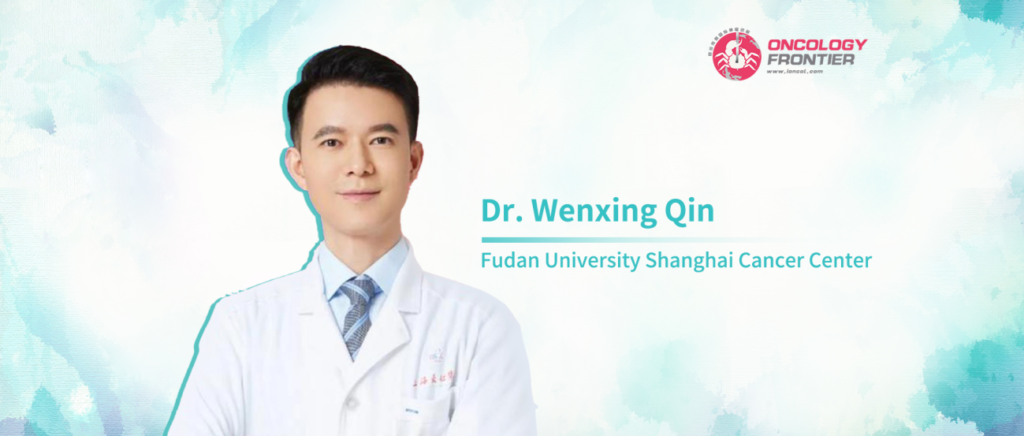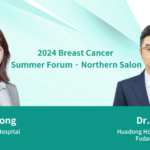
A century ago, Paul Ehrlich, the father of German immunology, proposed the concept of the "Magic Bullet," which targets toxic drugs to microorganisms or tumor cells. With continuous technological breakthroughs, Antibody-Drug Conjugates (ADCs) have seen explosive approval. These drugs combine specific monoclonal antibodies with highly active cytotoxic drugs via linkers, balancing the specificity of targeted therapies with the efficacy of cytotoxic drugs. ADCs have shown strong activity in anti-tumor therapy due to their unique design and pharmaceutical properties, with significant advantages in targeting specificity and reducing side effects. Particularly in breast cancer, ADCs like T-DXd have brought significant survival benefits to advanced patients, transforming the clinical treatment landscape of breast cancer. Despite their impressive clinical performance, ADCs still face the challenge of treatment resistance. Fully understanding the mechanisms of ADC resistance is clinically significant as it guides the development of subsequent treatment strategies. Oncology Frontier invited Dr. Wenxing Qin from Fudan University Shanghai Cancer Center to systematically review the progress in ADC resistance mechanisms and feasible response strategies.1. Main Mechanisms of ADCs
After entering the bloodstream, the antibody part of ADCs binds to antigens on the target cell surface, gets internalized via receptor-mediated endocytosis, and releases cytotoxic drugs through the endosome-lysosome pathway to kill tumor cells. Additionally, membrane-permeable payloads can exert a bystander effect, killing surrounding antigen-negative cells. The anti-tumor activity of ADCs also involves the activation of the immune system through antibody-dependent cellular cytotoxicity (ADCC), antibody-dependent cellular phagocytosis (ADCP), and complement-dependent cytotoxicity (CDC).
2. Mechanisms of ADC Resistance
The action of ADCs involves multiple steps, with abnormalities at any stage leading to resistance. Possible mechanisms include changes in antigen levels recognized by monoclonal antibodies, defects in internalization and transport pathways, lysosomal dysfunction, drug efflux pumps expelling drugs from cells, resistance to cytotoxic drugs or target mutations, cell cycle effects, signal pathway activation, and apoptosis dysregulation.
2.1 Antigen Expression Heterogeneity HER2 expression heterogeneity can be observed in 16%-36% of HER2+ breast tumors. Systemic therapy can kill most sensitive cells, and the remaining resistant cells proliferate, leading to tumor recurrence. Research shows that HER2 heterogeneity affects neoadjuvant therapy efficacy. In a study using T-DM1 combined with Pertuzumab for neoadjuvant therapy, the pCR rate was 55% in patients without intratumoral heterogeneity and 0% in those with heterogeneity.
2.2 Antigen Dimerization Dimerization of antigens with other cell surface receptors may mediate ADC resistance. NRG-1β (a ligand inducing HER2/HER3 heterodimerization) inhibits T-DM1 cytotoxicity in a subgroup of HER2-amplified breast cancer cells. Adding Pertuzumab (blocking HER2/HER3 dimerization) can overcome this resistance, showing synergy with TDM-1. Therefore, bispecific antibodies (recognizing two different epitopes of the target antigen) can be used in ADCs to overcome resistance.
2.3 Antigen Downregulation In HER2+ advanced breast cancer, first-line treatment usually involves Trastuzumab, Pertuzumab, and taxane-based therapies, which downregulate HER2 expression, potentially mediating resistance to second-line anti-HER2 ADCs. Preclinical studies show that HER2 expression decreases after cyclic T-DM1 treatment-induced resistance, and restoring HER2 expression can reverse T-DM1 resistance. Causes of HER2 downregulation include extracellular domain deletion and molecular masking, where MUC4 (membrane-associated mucin 4) interacts with HER2, leading to steric hindrance that hides HER2 binding sites, causing resistance to Trastuzumab/T-DM1.
2.4 Internalization and Transport Pathway Obstructions HER2’s rapid recycling feature, where endosomes containing HER2 quickly recycle to the plasma membrane, reduces T-DM1 reaching the lysosome, decreasing ADC efficacy. CAV1 (Caveolin-1), a main protein in cholesterol-rich membrane domains, is negatively correlated with T-DM1 uptake, mediating endocytosis-related resistance.
2.5 Payload Resistance ADC resistance can involve the payload itself. A 2021 Cancer Discovery report on secondary resistance to Sacituzumab Govitecan showed TOP1 and Trop-2 gene mutations caused resistance. DAISY study exploratory analysis found SLX4 mutation might relate to T-DXd resistance. Cross-resistance is unlikely between different mechanism payloads; T-DXd remains effective in T-DM1-resistant cells.
2.6 Payload Efflux Overexpression of ATP-binding cassette (ABC) transporters, enhancing drug efflux, plays a major role in chemotherapy resistance. T-DM1 resistance correlates with transporter expression, and reversing or silencing the MRP1 gene (encoding ABCC1 drug efflux pump) restores sensitivity to ADCs.
3. Strategies to Overcome ADC Resistance
ADC resistance arises through various mechanisms, some still unclear and requiring further clinical exploration. Strategies include combination therapies, new ADC development, and biomarker-guided individualized clinical decisions.
3.1 Combination Therapies
ADC and TKIs Combination: Dual HER2 blockade with TKIs (binding HER intracellular domains) and ADCs improves receptor internalization and payload uptake, overcoming resistance related to HER2 downregulation. Studies show significant clinical efficacy, with ongoing trials evaluating combinations like T-DM1 with Neratinib or Tucatinib.
ADC and ICIs Synergy: ADCs enhance DC maturation, activate T cells, and, combined with ICIs, show potential in overcoming resistance. Trials like KATE2 (T-DM1 with Atezolizumab) and BEGONIA (T-DXd with Durvalumab) demonstrate promising outcomes.
ADC with DNA Damage Agents: Combining ADCs with DNA damage enhancers like PARP inhibitors shows potential synergistic effects, especially in TNBC, regardless of BRCA status.
ADC and Statins: Inhibiting CAV1 with statins enhances T-DM1 efficacy. Retrospective analysis showed improved mPFS in patients combining T-DM1 with statins.
3.2 Developing New ADCs Enhancing ADC components (antibodies, linkers, payloads) and developing bispecific or dual-epitope ADCs like BL-B01D1 and JSKN003 show promising efficacy, especially in overcoming resistance.
3.3 Predicting ADC Resistance Using predictive biomarkers such as ctDNA HER2 gene amplification, MUC4 expression, RAB5A levels, and SLC46A3 mutations can guide treatment decisions and predict ADC sensitivity.
4. Conclusion
ADCs offer new treatment options with their unique mechanisms and advantages, but resistance remains a significant challenge. Understanding and addressing ADC resistance through improved ADC design, new drug development, and combination therapies will enhance clinical outcomes for cancer patients.
Dr. Wenxing Qin
- Associate Chief Physician, Fudan University Affiliated Cancer Hospital
- Executive Director, Oncology Department, Xiamen Hospital, Fudan University Affiliated Cancer Hospital
- Ph.D. in Oncology, Postdoctoral Fellow in Clinical Pharmacy, Master’s Supervisor
- Shanghai Young Talents in Medicine
- Member of Breast Cancer Expert Committee, Chinese Society of Clinical Oncology (CSCO)
- Member of Breast Cancer Professional Committee, China Anti-Cancer Association
- Deputy Director, Youth Expert Committee, CSCO
- Standing Committee Member, Patient Education Expert Committee, CSCO
- Standing Committee Member, Translational Medicine Committee, CSCO
- Standing Committee Member, Breast Alliance, Changjiang Scholar
- Member, Cardio-Oncology Expert Committee, CSCO
- Member, Oncology Expert Committee, National Health Commission Capacity Building and Continuing Education
- Member, Integrative Oncology Committee, China Anti-Cancer Association
- Member, Clinical Research Management Committee, China Anti-Cancer Association
- Member, Youth Group, Breast Cancer Committee, Chinese Medical Association
- Deputy Director, Youth Committee, Breast Cancer Professional Committee, Shanghai Anti-Cancer Association
- Deputy Director, Youth Committee, Molecular Target Committee, Shanghai Medical Association
- Deputy Director, Youth Committee, Clinical Epidemiology and Evidence-Based Medicine Committee, Shanghai Medical Association
- Standing Committee Member, Clinical Drug Research Committee, Shanghai Anti-Cancer Association


